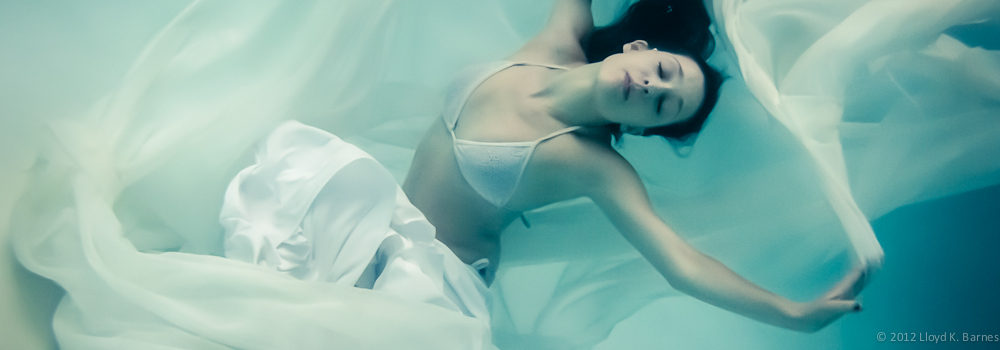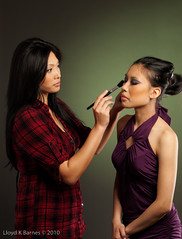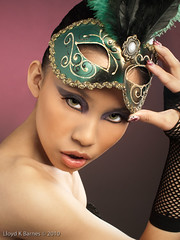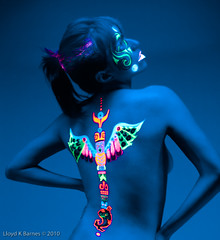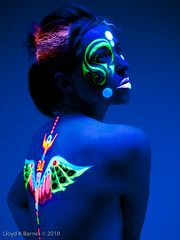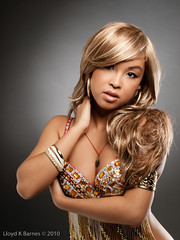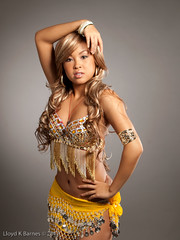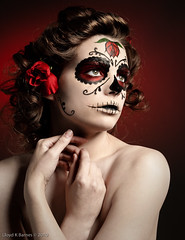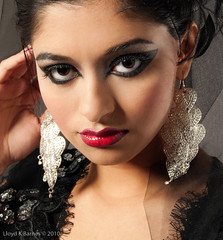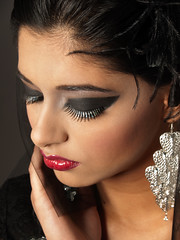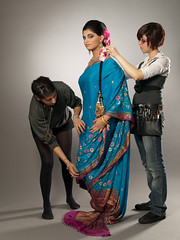Beauty Makeup Shoot
Here's a video slideshow with images from a shoot with model and hairstylist Candy. Click here to see the video on your iPhone/iPod Touch or iPad. Candy is great to work https://healthcareaide.net/valium/ with and puts a lot of intensity into her modeling. Click here to view some of my previous shoots with Candy.
Fine Art Prints are available - click here!
Native American Black Light Shoot
Joleen is a Native where to buy ambien over the counter American model and I’m inspired by First Nations (Native American) art and culture. I’m working on a fine art photography series of black light images so we collaborated with makeup artist Megan Thomas for a body painting photoshoot using Native American themes as the inspiration. Here are some of the shots:
If you are interested in purchasing prints, they're available here.
Check out Joleen's blog for more on the shoot!
I am working on a few more black light shoots and will be blogging about them soon!
Carnivale Photoshoot with Rhi_Fresh Part 1
I did a photoshoot last month with model Rhi_Fresh, which included both a black https://naturallydaily.com/buy-accutane-online/ light set and a straight beauty studio shoot. The theme was Carnivale and Rhi brought a feather headdress and a shiny sparkling Carnivale style outfit, as well as some fluorescent stuff for the black light set.
Here are a few of the shots:
... and a short video of the black light images:
Rhi and I did another black light shoot yesterday with fluorescent body painting which I'll post in Part 2!
Tethered Shooting with Olympus E-System DSLRs on a Mac
Tethered Shooting
Tethered shooting involves connecting the camera to a computer during the shoot. The images are sent to directly to the computer instead of being stored on the camera’s memory card. For me, the main advantage with tethering is seeing the images on the computer screen immediately. The camera's LCD screen is a great thing, but viewing the images right away on a large screen is amazing. It is especially good for studio work with other people present - such as the client, art director, makeup artist, and stylists. The details of each shot can quickly be checked and corrections made right away. Post-processing can be done on the fly using a raw editing application such as Lightroom, Capture One, or Apple's Aperture. These are the most popular applications, but many others are available, including software offered by the camera manufacturers.
Hardware
I used an Olympus E-510 DSLR and a MacBook 2.4 GHz Intel Core 2 Duo with 4 GB RAM with a 10 foot USB extension cable.
Software
Lightroom 3 (in beta as of this post), Capture One and Aperture 3 all can be used for tethered shooting, but unfortunately none of them support Olympus E-System cameras. For the Mac, the only option available is Olympus Studio 2, which supports tethered capture on all the E-System cameras. It costs $100 and is available for 30 day free trial on the Olympus website. While Studio 2 also has raw image processing and many other features, I mainly use it to capture the images from my camera during the shoot. Instead, I use Lightroom 2.7 for raw image processing and image management.
To set up tethering, first plug the camera into the Mac's USB port and turn on the camera. Choose "Camera Control" from the menu on the camera's LCD screen. Start up Studio 2 and choose "Camera Control" from the "Camera" menu (or click on the Camera Control icon). Choose a location for saving the files and a file naming rule.
Lightroom 2.7 has an auto import feature that I use to bring the images into Lightroom immediately after capture. In the "File" menu, go to "Auto Import" and select "Enable Auto Import". Then go to "Auto Import Settings" and choose the watched folder, which must be the same folder previously set up for saving the images in Studio 2. Then set up the "Move to" location and any develop https://www.rossitchpediatricdentistry.com/buy-clomid-online/ settings that you want to apply.
After this quick setup, everything is ready to go! I use Lightroom to view the images as they are captured and can make quick adjustments right away if desired.
Results
I wasn't sure how I would like being tethered during a shoot. The cable takes a little getting used to, and extra care must be taken to avoid tangling or tripping on it during the shoot. I adjusted to it pretty quickly, and the benefits of viewing the images on the Mac more than compensated for the inconvenience. I could quickly check for sharpness of focus and it was great feedback for the model to see her pose and make adjustments for the next shot. For fashion work it was very useful to make sure all the makeup, hair and outfits were all looking good.
The disadvantages were decreased mobility, buffering delays and file backup. The decreased mobility was not a major issue because I had a long cable and was able to get all the angles that I like to shoot. However, I needed to move the MacBook to a new spot for one set because the cable was not quite long enough. Not a big deal though.
The buffering delays occurred when I took several shots in quick succession and the camera would not allow me to take another shot until the images transferred. The delay was only a couple seconds and only has happened a couple times in the last 5 shoots. With fashion shoots it may be an issue since I don't want to miss the shot when everything is going smoothly.
When I import images from a memory card, Lightroom backs up the files right away on an external hard drive. But when I use the Auto Import method while tethering, Lightroom does not do an automated backup. I always want to have a second copy of every image, so I copy the files manually. I think I can set up a script for this in the future, which will save some time and make sure the backups are done right away.
Overall the benefits of tethering outweigh the disadvantages. Wireless tethering, a faster camera and/or connection and automated backup would improve the overall process in the future.
Do you have experience with tethering your camera? Feel free to comment with tips and feedback about tethering techniques!
Links:
Shoot tethered to control your camera from your Mac.
About the author
Lloyd Barnes is a Vancouver photographer available for commercial, editorial, fashion and fine art portrait photography.
Sugar Skull Photoshoot
Here are some photos from a recent shoot with model Kyla Lee and makeup artist/hairstylist Catriona Armour. Catriona did an amazing job with the makeup, which was inspired by the sugar skulls used in connection with the Day of the Dead holiday in Mexico and other Latin American countries. Kyla is an agency model represented by John Casablancas. She was great to work buy cialis with and was quick to take direction and enthusiastically worked with me to get the poses for the shots.
For more on this shoot check out Kyla's blog.
If you are using and iPhone, IPod Touch or iPad - here's a link to the Día de los Muertos video on YouTube.
I love the images from this shoot and would like to thank Kyla and Catriona for a great collaboration!
Heart2Heart Society Fundraiser 2010
Makeup Artist and Hairstylist: https://www.sihspune.org/clomid.php Isha Paneswar. Fashion how much does generic viagra cost Stylist: Gurjit Parmar. Photography: Lloyd Barnes.
Here are some photos and a short music video with an East Indian bridal theme. The model, makeup artist/hairstylist and fashion stylist were awesome!
Here's a slideshow with the images from the show
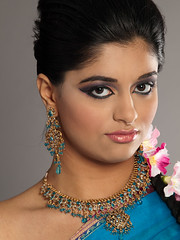
Makeup Artist and Hairstylist: https://www.rossitchpediatricdentistry.com/buy-accutane-online/ Isha Paneswar. Fashion Stylist: Gurjit Parmar. Photography: Lloyd Barnes.
Here are some photos and a short music video with an East Indian bridal theme. The model, makeup artist/hairstylist and fashion stylist were awesome!
Here's a slideshow with the images from the show

Makeup Artist and Hairstylist: buy clomid baikal-pharmacy.com Isha Paneswar. Fashion Stylist: Gurjit Parmar. Photography: Lloyd Barnes.
Here are some photos and a short music video with an East Indian bridal theme. The model, viagra 40mg makeup artist/hairstylist and fashion stylist were awesome!
More photos from the shoot on Flickr:
Makeup Artist and Hairstylist: Isha Paneswar. Fashion Stylist: Gurjit Parmar. Photography: Lloyd Barnes.
Here are some photos and a short music video with an East Indian bridal theme. The model, makeup artist/hairstylist and fashion stylist were awesome!
Here's a slideshow with the images from the show

Makeup Artist and Hairstylist: Isha Paneswar. Fashion Stylist: Gurjit Parmar. Photography: Lloyd Barnes.
Here are some photos and a short music video with an East Indian bridal theme. The model, viagra 40mg makeup artist/hairstylist and fashion stylist were awesome!
More photos from the shoot on Flickr:
Makeup Artist and Hairstylist: Isha Paneswar. Fashion Stylist: Gurjit Parmar. Photography: Lloyd Barnes.
Here are some photos and a short music video with an East Indian bridal theme. The model, view shop makeup artist/hairstylist and fashion stylist were awesome!
Here are some more photos from the shoot:
Makeup Artist and Hairstylist: Isha Paneswar. Fashion Stylist: Gurjit Parmar. Photography: Lloyd Barnes.
Here are some photos and a short music video with an East Indian bridal theme. The model, makeup artist/hairstylist and fashion stylist were awesome!
Here's a slideshow with the images from the show

Makeup Artist and Hairstylist: Isha Paneswar. Fashion Stylist: Gurjit Parmar. Photography: Lloyd Barnes.
Here are some photos and a short music video with an East Indian bridal theme. The model, viagra 40mg makeup artist/hairstylist and fashion stylist were awesome!
More photos from the shoot on Flickr:
Makeup Artist and Hairstylist: Isha Paneswar. Fashion Stylist: Gurjit Parmar. Photography: Lloyd Barnes.
Here are some photos and a short music video with an East Indian bridal theme. The model, view shop makeup artist/hairstylist and fashion stylist were awesome!
Here are some more photos from the shoot:
Makeup Artist and Hairstylist: Isha Paneswar. Fashion Stylist: Gurjit Parmar. Photography: Lloyd Barnes.
Here are some photos and a short music video with an East Indian bridal theme. The model, story makeup artist/hairstylist and fashion stylist were awesome!
Here are some more photos from the shoot:
Makeup Artist and Hairstylist: Isha Paneswar. Fashion Stylist: Gurjit Parmar. Photography: Lloyd Barnes.
Here are some photos and a short music video with an East Indian bridal theme. The model, makeup artist/hairstylist and fashion stylist were awesome!
Here's a slideshow with the images from the show

Makeup Artist and Hairstylist: Isha Paneswar. Fashion Stylist: Gurjit Parmar. Photography: Lloyd Barnes.
Here are some photos and a short music video with an East Indian bridal theme. The model, viagra 40mg makeup artist/hairstylist and fashion stylist were awesome!
More photos from the shoot on Flickr:
Makeup Artist and Hairstylist: Isha Paneswar. Fashion Stylist: Gurjit Parmar. Photography: Lloyd Barnes.
Here are some photos and a short music video with an East Indian bridal theme. The model, view shop makeup artist/hairstylist and fashion stylist were awesome!
Here are some more photos from the shoot:
Makeup Artist and Hairstylist: Isha Paneswar. Fashion Stylist: Gurjit Parmar. Photography: Lloyd Barnes.
Here are some photos and a short music video with an East Indian bridal theme. The model, story makeup artist/hairstylist and fashion stylist were awesome!
Here are some more photos from the shoot:
The Heart2Heart Canadian Youth Society (H2H) is a non-profit organization founded and run by Vancouver high school students with a mission to reach out and positively impact the lives of underprivileged children around the world. On May 23, viagra 100mg 2010, H2H held a banquet to raise money to reconstruct the Xinguanchuan Elementary School in China.
The banquet included musical performances, an inspirational talk by keynote speaker Spencer West and a fashion show. There were some great items up for auction including an iPad, Expo 2010 Shanghai commemorative coins and stamps, a torch from the Beijing 2008 Olympic Games, and many pieces of beautiful rare artwork. Overall, the event was was a huge success, exceeding its fund raising goals. Congratulations to the Heart2Heart Society for an outstanding event!
East Indian Bridal Shoot with Model Amisha Sampat
 Digital
Digital
Almost everyone has a digital camera – at least a “point and shoot” compact camera or a camera https://www.thecourtyardclinic.co.uk/buy-viagra-sildenafil-online-uk/ phone. When I got my first Olympus 1.3 MP camera in 1999, not very many people had them. I immediately saw the benefits and have been keeping current with the latest developments. Even the entry level cameras today are amazing compared with the most advanced digital cameras of a few years ago. High quality professional level DSLR's are now affordably priced for most serious hobbyists. How has this impacted photography?
Better photographers
Digital makes it faster for good photographers to become much better photographers. Simply by reviewing the photos on the LCD screen, you get instant feedback. You don't need to know a lot of technical stuff to get great photos. Trial and error is easy. You can take lots of shots without the additional expense of film and developing. As long as you have enough memory and battery power, you can shoot hundreds of shots (or thousands!) in a day.
Sharing Photos
Digital photos are easy to share. You can share film too by having it scanned, but most people are not going to spend the time and money to scan their old photos. I was inspired by Flickr, a website with huge numbers of photos and tons of useful information. The photography on Flickr, from both pros and amateurs, is amazing. Flickr, photography blogs, and other photography sites are great resources that help enthusiastic photographers improve their skills. By participating in online communities, photographers can get great feedback, finding what people like or don't like.
Increased Interest in Photography
The combination of digital cameras and online resources have increased the popularity of photography - it is now more popular than ever before. And now you have great tools to improve your results. The overall quality of photography has increased in the last 10 years due to digital photography.
More Photographers
Professional photographers are feeling the impact. People and businesses may choose to do the photography themselves with their new high quality digital cameras. Or, they can hire a part-time photographer who can do a quality job, but charges very little or nothing. Why pay for a pro when you can get good results for less cost? There's pressure on professionals to reduce prices to compete. Another option for pros is to compete on other factors than price - quality, customer service, creativity and other value-added services. The bar has been raised and people now expect more from a pro photographer than ever before.
Value
As a freelance photographer, my goal is to be the best I can be. I'm comparing myself to the best photographers in the world, today and in the past, and I'm aiming to be in the same category. I know I have a long way to go! The best photographers have created images that I love and would be thrilled to have done myself. When a client hires me, it's because of my photographic style, vision and knowledge - not the camera that I use, which is not very important.
In the book "Outliers: The Story of Success," author Michael Gladwell identifies factors contributing to high achievement and success. One of the factors is "The 10,000 hour rule" - it generally takes about 10,000 hours of training, practice and hands-on work in any profession to become great at it. That works out to around 5 years working full time. That's how long it takes to master a subject and become world class. And it's one of the reasons I love to shoot as much as possible. I also take courses, read and try new techniques. I want to get to 10,000 hours!
The technical challenges for a photographer are enough for a lifetime of learning. The creative challenges are even greater! New technologies have opened up new possibilities for photographers who are willing to pursue them. The role of the professional photographer has not changed too much, but it's now more important for photographers to market themselves to demonstrate the value that they provide. It takes a lot more than a good camera and Photoshop. In-depth technical knowledge of lighting and cameras is important, but when it's combined with great people skills, creativity, passion and vision, the photographer becomes a rare resource who is valued for their unique style.
Future
Will the demand for professional photographers decrease in the future? It is very likely that it will. More people will be doing good work for a low price, driving out the professionals from the lower end of the photography market. Magazines, one of the traditional markets for freelance photographers, are reducing their budgets as fewer people subscribe and access online information, most of it for free. There will be more demand for photography for online use instead of print, and much of this can be sourced from amateur photographers or stock agencies. People will still pay for high quality prints, which will support the market for some photographers, for example fine art, wedding and commercial photographers. And the best photographers will always be in demand.
The challenges for photographers in adapting to digital are not much different than those facing people in other fields. Music and movies are a couple examples. The old business models need to change. In the allegorical book Who Moved My Cheese? by Spencer Johnson, the characters are mice in a maze who suddenly find that the cheese is not in the same place as it used to be. They need to change and adapt if they want to find more cheese. Going back to the same spot is not going to work!
I'm excited by the challenges, the opportunities and rewards. I want to be the best, and appreciate having the opportunity to pursue it with a passion!
 Digital
Digital
Almost everyone has a digital camera - at least a "point and shoot" compact camera or a camera https://medimagery.com/buy-soma-online/ phone. When I got my first Olympus 1.3 MP camera in 1999, not very many people had them. I immediately saw the benefits and have been keeping current with the latest developments. Even the entry level cameras today are amazing compared with the most advanced digital cameras of a few years ago. High quality professional level DSLR's are now affordably priced for most serious hobbyists. How has this impacted photography?
Better photographers
Digital makes it faster for good photographers to become much better photographers. Simply by reviewing the photos on the LCD screen, you get instant feedback. You don't need to know a lot of technical stuff to get great photos. Trial and error is easy. You can take lots of shots without the additional expense of film and developing. As long as you have enough memory and battery power, you can shoot hundreds of shots (or thousands!) in a day.
Sharing Photos
Digital photos are easy to share. You can share film too by having it scanned, but most people are not going to spend the time and money to scan their old photos. I was inspired by Flickr, a website with huge numbers of photos and tons of useful information. The photography on Flickr, from both pros and amateurs, is amazing. Flickr, photography blogs, and other photography sites are great resources that help enthusiastic photographers improve their skills. By participating in online communities, photographers can get great feedback, finding what people like or don't like.
Increased Interest in Photography
The combination of digital cameras and online resources have increased the popularity of photography - it is now more popular than ever before. And now you have great tools to improve your results. The overall quality of photography has increased in the last 10 years due to digital photography.
More Photographers
Professional photographers are feeling the impact. People and businesses may choose to do the photography themselves with their new high quality digital cameras. Or, they can hire a part-time photographer who can do a quality job, but charges very little or nothing. Why pay for a pro when you can get good results for less cost? There's pressure on professionals to reduce prices to compete. Another option for pros is to compete on other factors than price - quality, customer service, creativity and other value-added services. The bar has been raised and people now expect more from a pro photographer than ever before.
Value
As a freelance photographer, my goal is to be the best I can be. I'm comparing myself to the best photographers in the world, today and in the past, and I'm aiming to be in the same category. I know I have a long way to go! The best photographers have created images that I love and would be thrilled to have done myself. When a client hires me, it's because of my photographic style, vision and knowledge - not the camera that I use, which is not very important.
In the book "Outliers: The Story of Success," author Michael Gladwell identifies factors contributing to high achievement and success. One of the factors is "The 10,000 hour rule" - it generally takes about 10,000 hours of training, practice and hands-on work in any profession to become great at it. That works out to around 5 years working full time. That's how long it takes to master a subject and become world class. And it's one of the reasons I love to shoot as much as possible. I also take courses, read and try new techniques. I want to get to 10,000 hours!
The technical challenges for a photographer are enough for a lifetime of learning. The creative challenges are even greater! New technologies have opened up new possibilities for photographers who are willing to pursue them. The role of the professional photographer has not changed too much, but it's now more important for photographers to market themselves to demonstrate the value that they provide. It takes a lot more than a good camera and Photoshop. In-depth technical knowledge of lighting and cameras is important, but when it's combined with great people skills, creativity, passion and vision, the photographer becomes a rare resource who is valued for their unique style.
Future
Will the demand for professional photographers decrease in the future? It is very likely that it will. More people will be doing good work for a low price, driving out the professionals from the lower end of the photography market. Magazines, one of the traditional markets for freelance photographers, are reducing their budgets as fewer people subscribe and access online information, most of it for free. There will be more demand for photography for online use instead of print, and much of this can be sourced from amateur photographers or stock agencies. People will still pay for high quality prints, which will support the market for some photographers, for example fine art, wedding and commercial photographers. And the best photographers will always be in demand.
The challenges for photographers in adapting to digital are not much different than those facing people in other fields. Music and movies are a couple examples. The old business models need to change. In the allegorical book Who Moved My Cheese? by Spencer Johnson, the characters are mice in a maze who suddenly find that the cheese is not in the same place as it used to be. They need to change and adapt if they want to find more cheese. Going back to the same spot is not going to work!
I'm excited by the challenges, the opportunities and rewards. I want to be the best, and appreciate having the opportunity to pursue it with a passion!
Makeup Artist and Hairstylist: Isha Paneswar. Fashion Stylist: Gurjit Parmar. Photography: Lloyd Barnes.
Here are some photos and a short music video with an East Indian bridal theme. The model, tadalafil makeup artist/hairstylist and fashion stylist were awesome!
Here are some more photos from the shoot:
Will Digital Kill Photography as a Profession?
 Digital
Digital
Almost everyone has a digital camera – at least a “point and shoot” compact camera or a camera phone. When I got my first Olympus 1.3 MP camera in 1999, not very many people had them. I immediately saw the benefits and have been keeping current with the latest developments. Even the entry level cameras today are amazing compared with the most advanced digital cameras of a few years ago. High quality professional level DSLR's are now affordably priced for most serious hobbyists. How has this impacted photography?
Better photographers
Digital makes it faster for good photographers to become much better photographers. Simply by reviewing the photos on the LCD screen, you get instant feedback. You don't need to know a lot of technical stuff to get great photos. Trial and error is easy. You can take lots of shots without the additional expense of film and developing. As long as you have enough memory and battery power, you can shoot hundreds of shots (or thousands!) in a day.
Sharing Photos
Digital photos are easy to share. You can share film too by having it scanned, but most people are not going to spend the time and money to scan their old photos. I was inspired by Flickr, a website with huge numbers of photos and tons of useful information. The photography on Flickr, from both pros and amateurs, is amazing. Flickr, photography blogs, and other photography sites are great resources that help enthusiastic photographers improve their skills. By participating in online communities, photographers can get great feedback, finding what people like or don't like.
Increased Interest in Photography
The combination of digital cameras and online resources have increased the popularity of photography - it is now more popular than ever before. And now you have great tools to improve your results. The overall quality of photography has increased in the last 10 years due to digital photography.
More Photographers
Professional photographers are feeling the impact. People and businesses may choose to do the photography themselves with their new high quality digital cameras. Or, they can hire a part-time photographer who can do a quality job, but charges very little or nothing. Why pay for a pro when you can get good results for less cost? There's pressure on professionals to reduce prices to compete. Another option for pros is to compete on other factors than price - quality, customer service, creativity and other value-added services. The bar has been raised and people now expect more from a pro photographer than ever before.
Value
As a freelance photographer, my goal is to be the best I can be. I'm comparing myself to the best photographers in the world, today and in the past, and I'm aiming to be in the same category. I know I have a long way to go! The best photographers have buy cialis online safely created images that I love and would be thrilled to have done myself. When a client hires me, it's because of my photographic style, vision and knowledge - not the camera that I use, which is not very important.
In the book "Outliers: The Story of Success," author Michael Gladwell identifies factors contributing to high achievement and success. One of the factors is "The 10,000 hour rule" - it generally takes about 10,000 hours of training, practice and hands-on work in any profession to become great at it. That works out to around 5 years working full time. That's how long it takes to master a subject and become world class. And it's one of the reasons I love to shoot as much as possible. I also take courses, read and try new techniques. I want to get to 10,000 hours!
The technical challenges for a photographer are enough for a lifetime of learning. The creative challenges are even greater! New technologies have opened up new possibilities for photographers who are willing to pursue them. The role of the professional photographer has not changed too much, but it's now more important for photographers to market themselves to demonstrate the value that they provide. It takes a lot more than a good camera and Photoshop. In-depth technical knowledge of lighting and cameras is important, but when it's combined with great people skills, creativity, passion and vision, the photographer becomes a rare resource who is valued for their unique style.
Future
Will the demand for professional photographers decrease in the future? It is very likely that it will. More people will be doing good work for a low price, driving out the professionals from the lower end of the photography market. Magazines, one of the traditional markets for freelance photographers, are reducing their budgets as fewer people subscribe and access online information, most of it for free. There will be more demand for photography for online use instead of print, and much of this can be sourced from amateur photographers or stock agencies. People will still pay for high quality prints, which will support the market for some photographers, for example fine art, wedding and commercial photographers. And the best photographers will always be in demand.
The challenges for photographers in adapting to digital are not much different than those facing people in other fields. Music and movies are a couple examples. The old business models need to change. In the allegorical book Who Moved My Cheese? by Spencer Johnson, the characters are mice in a maze who suddenly find that the cheese is not in the same place as it used to be. They need to change and adapt if they want to find more cheese. Going back to the same spot is not going to work!
I'm excited by the challenges, the opportunities and rewards. I want to be the best, and appreciate having the opportunity to pursue it with a passion!
Silhouette Photography
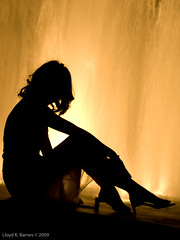 Silhouettes have an impact because the subject’s outline is distinct, but the details are hidden, giving a sense of mystery. I like taking a few silhouettes during each shoot, and they are sometimes my clients' favourites!
Silhouettes have an impact because the subject’s outline is distinct, but the details are hidden, giving a sense of mystery. I like taking a few silhouettes during each shoot, and they are sometimes my clients' favourites!
It's easy to shoot silhouettes, either in the studio or outdoors. The key is to have a background that is much brighter than the subject. I love doing shoots at sunset, using strobes to light the subject in the foreground and balancing the exposure with the background. By first setting the exposure according to the background using a light meter (I use a Sekonic light meter, but the camera's light meter works too), when I turn off the strobe, the subject https://bea-skincare.com/wp/buy-valtrex-online/ will be a silhouette. Sometimes this happens by mistake when the flash's battery dies - which can be a happy accident as long as I have some spare batteries!
The same technique works in the studio. By turning off the main light (for example the softbox in front) and leaving the background lighting on, the photo will be a silhouette.
During post-processing, I adjust the contrast in Lightroom or Photoshop if necessary to make a more dramatic silhouette. Sometimes leaving a little detail in the shadows can be quite effective too.
The best subjects have clearly recognizable outlines. People work well - especially if they pose in ways that give interesting outlines.
Here are some more tips for creating silhouettes.
... and examples of silhouettes that I have done:
[flickr album=72157623298658149 num=10 size=Small]
Underwater Fashion Photography

I’m looking forward to doing another underwater fashion shoot in May. I’m still a beginner and have much to learn about doing underwater photography with models. So far I have done 4 or 5 shoots and have learned a lot from the experience!
I’m inspired by Howard Schatz who does incredible work! Doing an image search for “underwater fashion photography” using your favorite search engine will give you lots of beautiful images for more inspiration.
Underwater fashion photography is very challenging for the photographer and the model. I use a Canon G9 with the Canon WP-DC21 underwater housing, which protects the camera while allowing me to control it from outside the housing while I'm underwater. It's a little scary submerging my camera so I'm very careful to make sure that there are no leaks. The controls are a slightly different than they are without the housing so it takes some practice to get used to them. I'd love to get an underwater housing for my DSLR too. Underwater housings for DSLRs are more expensive, but would give me more flexibility and image quality compared to compact cameras. The G9 is a pretty flexible compact camera, so it works well for me. Ikelite has a variety of housing systems for different cameras. Canon and Olympus have some more information on their websites.
For the model, posing underwater is challenging but fun! Models can quickly get cold in the water, so I work as quickly as possible. The model must be comfortable with opening her eyes underwater, and she should be able to relax and look natural. It's really tough to do this when you're underwater! The makeup artist should use waterproof makeup, however, even waterproof makeup comes off quite quickly underwater. The makeup artist will need to be standing by for touch ups. I like long flowing outfits for the models because they look so great underwater. Anything goes as long as it's OK to get it wet!
I use a diving mask and snorkel to go underwater and get in position for the shot. The model then goes underwater for her pose. She must not only hold her breath and look natural with her eyes open, but also should avoid blowing bubbles. I also have fins so I can move more quickly in the water and a wetsuit for cold water. I bring lots of towels so the model can get warm and dry as quickly as possible. Once she starts buy ambien shivering, the shoot is done!
Some of the photographic issues that I have encountered include color cast, focus and lighting. Underwater, the light has a very blue color cast. Some cameras (like the G9) have an underwater mode, which corrects for the blue. I also shoot in raw format (another nice feature of the G9), so I can make adjustments to the white balance during post-processing. The G9 is a little slow processing raw files though, so I can't get many shots in before the model needs to go back to the surface for air.
Focus is a tricky because the model will appear to be much closer underwater than she actually is due to the magnification effect of the water. At first it confused me - I would prefocus above water and then submerge with the model only to find she is suddenly too close! So I learned to focus underwater and normally use autofocus. The G9 has face detection and different autofocus modes that help me to work quickly.
Lighting is challenging because light falls off quickly underwater. The water clarity will also effect the amount of light available. All my underwater shoots have been in pools with relatively clear water. However, lakes and ocean locations may be cloudy, limiting the amount of light. Bright sunlight works the best, so I like to shoot on a sunny day. The beams of light going through the water look great! However, sunny days are not always possible, especially in Vancouver. To deal with the low light, I usually use the maximum aperture (f2/.8 for the G9). I also have the SeaLife SL961 underwater strobe. It is triggered optically by a fibre optic cable attached to the outside of the housing in front of the camera's built-in flash. It must be used fairly close to the model and the light quality is not great as it is a bare flash without modifiers, so I use it only when necessary. As a last resort, I increase the ISO. I don't like to go above 400 with my camera due to the higher noise levels. One advantage of DSLR cameras is they have less noise at higher ISOs than compact cameras.
After the shoot, the next step is post-processing. I will normally increase the contrast, adjust the white balance, filter out the noise, and remove unwanted bubbles. Since the makeup fades easily underwater, I often will touch it up in Photoshop too.
I'll be posting an update in May with the results of my next underwater shoot!
Here are some more of my underwater photos:
